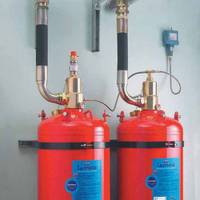Offshore Workboat Fire Safety

A Novec 1230 gas suppression system provides a unique, Class-compliant and effective margin of safety for an offshore dive support vessel. Despite the recent drop in oil prices, the marine sector remains extremely busy supporting the oil industry, and this will always remain the case. The squeeze on contractual pricing and labor is a recent issue caused by that drop in oil prices. Fortunately, the sector is led by legislation in the form of IMO/SOLAS regulations and respective Flag State requirements which are controlled by regulatory authorities such as DNV…
Safety Alert - The Dangers of Carbon Monoxide Exposure
The U.S. Coast Guard issued a Safety Alert warning mariners of dangers posed by exposure to carbon monoxide. Carbon monoxide is a colorless, odorless gas produced as a by-product of diesel and gasoline engines and can accumulate quickly in confined spaces. Mariners are urged to ensure that exhaust systems on diesel and gasoline engines are properly vented away from accommodation, working, and recreational areas on vessels. (7/9/03). Source: HK Law
Carbon Monoxide - A Deadly Gas
I know it is hard to believe but soon the cool winds of Autumn will be blowing. With the change in weather, heaters will be fired up and newspapers will fill with tragic tales of carbon monoxide poisoning. If this is a typical year, nearly 300 people will lose their lives to this "silent killer" and 5,000 people will require hospitalization from its toxic effects. Carbon monoxide is created by the inefficient combustion of carbon-based fuels such as gasoline, diesel, propane, natural gas, charcoal, and wood. These fuels can be found in virtually every home and every work setting. Carbon monoxide is a potential hazard in at your house, aboard vessels, and in poorly ventilated work areas in shipyards. One reason CO is a particularly hazardous gas is it is difficult to detect with the senses.





